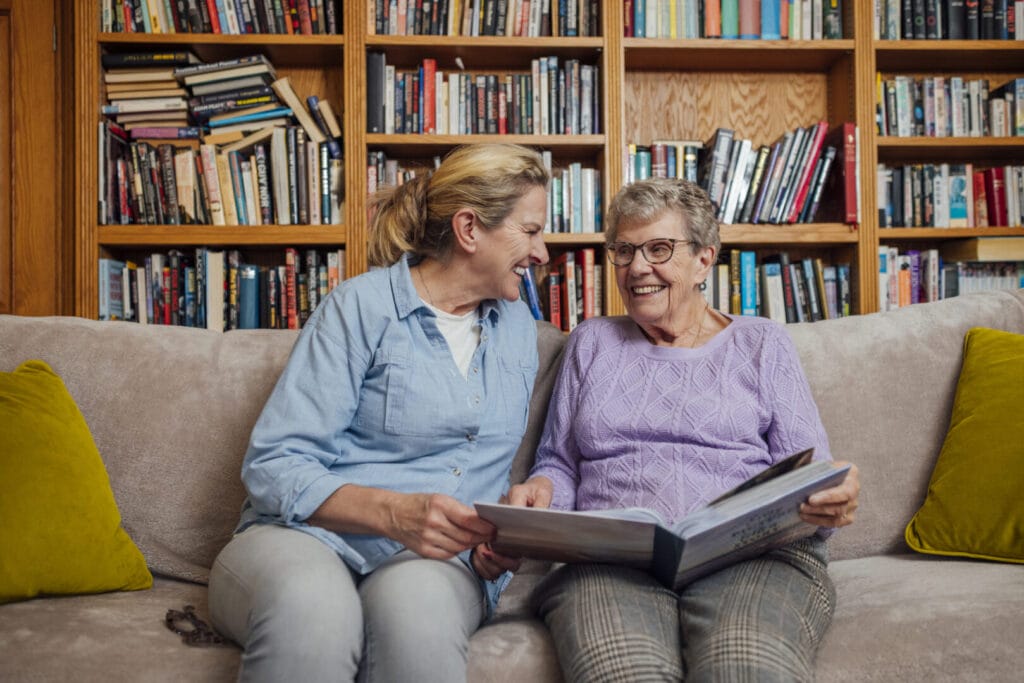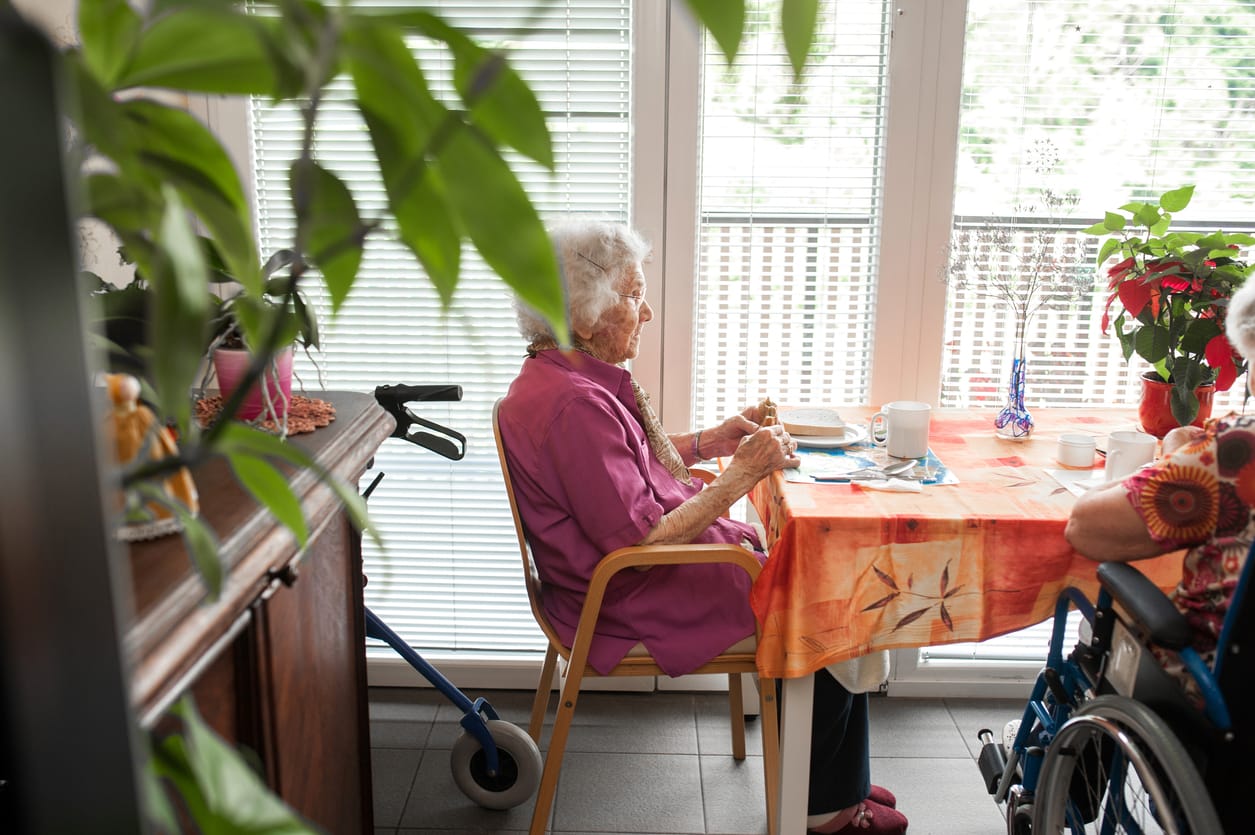Caring for a loved one with dementia is a journey that transforms not only daily routines but also the spaces where those routines unfold. Dementia, which affects memory and cognitive functions, requires thoughtful modifications to living environments to ensure both safety and comfort. This blog offers practical design tips that empower caregivers to create a dementia-friendly home.
Understanding the unique challenges of dementia is key to making effective home adjustments.
Impact of the Environment on Seniors with Dementia
The environment plays a crucial role in the lives of seniors with dementia. A well-designed space can alleviate stress and enhance their sense of security and comfort. Conversely, an inadequately adapted environment may contribute to confusion and increase the risk of accidents.
Key Principles of Dementia-Friendly Home Design
Caring for elderly loved ones with dementia involves creating a home environment that supports their unique needs and enhances their quality of life. Here are key principles of dementia-friendly design from the perspective of family caregivers:
Simplicity
- Reducing clutter: Minimizing unnecessary items and simplifying décor can help reduce confusion and promote clarity.
- Simplifying layouts: Clear pathways and organized spaces make it easier for seniors with dementia to navigate their surroundings independently.
Safety
- Essential modifications: Installing safety features such as locks on cabinets and doors, alarms for emergency situations, and non-slip flooring helps prevent accidents and ensures a secure living environment.
Contrast and Color
- Improving perception: Using contrasting colors for walls, furniture, and objects aids in distinguishing between different elements in the environment.
- Enhancing usability: Bold, contrasting colors can help seniors with dementia better identify objects and navigate spaces with greater ease.
Familiarity and Comfort
- Maintaining a recognizable environment: Incorporating familiar objects, photographs, and personal belongings helps seniors with dementia feel more at ease and connected to their surroundings.
- Adding personal touches: Creating spaces that reflect the individual's preferences and past experiences enhances comfort and promotes a sense of well-being.
“You don't just wake up one day with dementia or Alzheimer's; these conditions are developmental. Even when a problem triggers the need to collect data, it's reviewed by a specialist and filed away. There's no central repository allowing information to be shared across a multitude of researchers worldwide.”
Tan Le
Room-by-Room Adaptations for Dementia-Friendly Home Design
Ensuring the safety and comfort of our elderly loved ones with dementia begins with thoughtful room-by-room adaptations in the home.
Living Room
- Secure and simple furniture arrangements: Arrange furniture to create clear pathways and minimize obstacles.
- Adequate lighting and elimination of glare: Ensure sufficient lighting without harsh glares to reduce confusion.
- Usage of familiar and sentimental decorations: Incorporate familiar objects and photographs to create a comforting atmosphere.

Kitchen
- Simplified layout and safety-focused adaptations: Optimize kitchen layout for easy navigation and use.
- Clear labeling of cabinets and drawers: Labeling helps seniors locate items independently.
- Safe appliances and automated shut-off systems: Install appliances with safety features to prevent accidents.
Bedroom
- Safe furniture choices and positioning: Choose stable furniture and position it for easy access.
- Easy access to personal care items and clothes: Organize items in a way that facilitates independence.
- Use of memory aids like photo albums and familiar objects: Display meaningful items to promote familiarity and comfort.
Bathroom
- Installation of grab bars and non-slip surfaces: Ensure safety with grab bars and slip-resistant flooring.
- Adequate lighting and temperature controls: Maintain comfortable conditions to enhance safety and ease of use.
- Emergency response system: Install an emergency call system within reach for added security.

Technology and Tools to Assist Memory
According to the Alzheimer's Association, as of 2023, 6.2 million Americans aged 65 and older are living with Alzheimer's dementia. Technology integration plays a pivotal role in enhancing the daily lives of our senior loved ones. Smart home devices like voice-activated systems provide invaluable assistance by reminding them of medication schedules, tasks, and appointments, promoting independence and maintaining familiar routines. These devices also simplify access to information, reducing cognitive strain and enhancing overall comfort at home.
Safety remains paramount, supported by GPS trackers and movement sensors that help caregivers monitor our senior loved ones' whereabouts. Research from the National Institute on Aging shows that wearable GPS trackers can significantly reduce caregiver anxiety and improve their quality of life by providing real-time alerts in case of wandering, ensuring prompt assistance when needed.
Therapeutic technologies, such as personalized music players and digital photo frames displaying cherished memories, contribute to emotional well-being by fostering connections to past experiences and alleviating anxiety.
Engaging the Senses
Recognizing the profound impact sensory stimulation can have on the well-being of our elderly loved ones with dementia, here are key ways to engage their senses and enrich their daily lives:
- Sight: Create a visually calming environment with soft, warm colors that can soothe and comfort. Display familiar photographs, paintings, or landscapes to evoke positive memories and emotions. Consider using natural light to brighten rooms, as well-lit spaces can improve mood and orientation.
- Sound: Play soothing music or familiar songs that your loved one enjoys, as music can evoke powerful memories and emotions. Sounds of nature, like birds chirping or gentle waves, can create a peaceful atmosphere. Engage them in conversations and read aloud to stimulate their auditory senses.
- Touch: Incorporate a variety of textures in their environment. Soft blankets, smooth stones, or textured fabrics can provide comforting tactile experiences. Gentle hand massages or holding hands can also offer reassurance and a sense of connection.
- Smell: Aromatherapy can be beneficial, with calming scents like lavender or familiar smells like fresh-baked cookies helping to trigger positive memories. Using scents associated with happy times can stimulate recall and provide comfort.
- Taste: Offer foods that are not only nutritious but also enjoyable and familiar. Cooking favorite meals or baking together can be a wonderful way to engage taste and smell, creating both sensory stimulation and opportunities for connection.
- Movement and Balance: Encourage gentle physical activities such as walking, stretching, or light dancing. Movement helps improve balance and coordination, and it can also provide a joyful sensory experience.
By thoughtfully engaging the senses, we can help our elderly loved ones with dementia experience a richer, more fulfilling daily life. These sensory activities can enhance their mood, evoke cherished memories, and provide a greater sense of well-being and connection.





